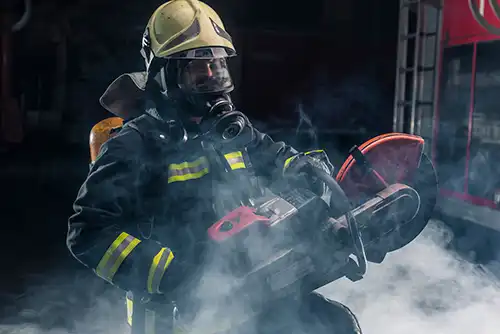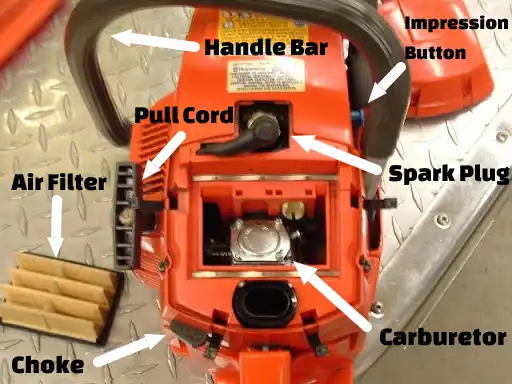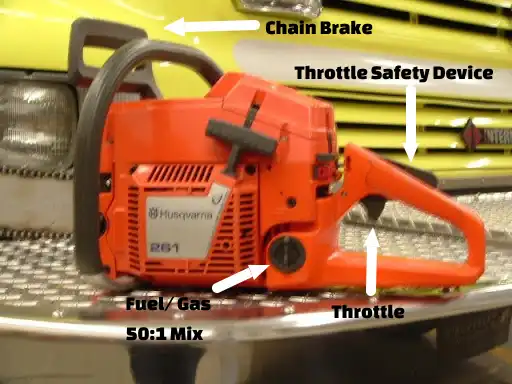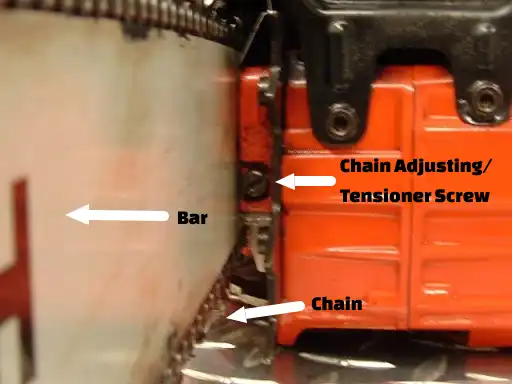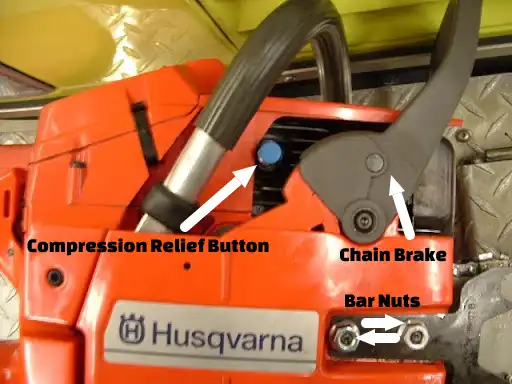How to Operate A Power Saw
In order to correctly operate and master a power saw, it’s essential you know all the parts, functions, and features of it. Firefighters and fire emergency responders need to be proficient in and knowledgeable of power saw operation just as much as any other piece of equipment they use.
Types of Saws Firefighters Use
Whether you need to cut down a tree during wildfire containment, use a chainsaw to create ventilation during a building fire, or cut through material to facilitate rescue, there are a range of power saws firefighters use in the field to accomplish certain tasks.
Common types of power saws fighters use include:
- Chainsaws
- Circular Saws (K-12)
- Ventilation Saws (Droop Nose)
Chainsaws have several applications in firefighting and are a common choice because of their versatility and durability. Chainsaws are regularly used during wildfire containment operations to cut live or dead branches and to fell whole trees.
Circular saws, also called rotary saws, are most commonly used in forcible entry and ventilation procedures. They are powerful saws and generally cut up to four inches deep, making them ideal for cutting through garage doors and drywall.
Ventilation saws look similar in appearance to regular chainsaws, but there are several differences. As their name suggests, ventilation saws are designed for quicker cutting to create ventilation openings. Ventilation saws have a “bullet chain” design that need to be pushed, rather than pulled like a regular chainsaw, and produce a fine sawdust. The bullet chain design and rotating speed allows the ventilation saw to cut through virtually any material.
What Are the Parts of A Power Saw?
Although power saws are seen as a regular, everyday piece of equipment, without proper training and safety precautions, they can cause significant injury and death. One of the first steps firefighters can take to increase their comfortability with operating powersaws is to understand and learn what all the components of a power saw are and where they are located.
Power saw designs include the following components:
- Powerhead
- Chain
- Bar
- Handle Half/Full
- Chain Brake
- Throttle
- Bar Nuts
- Gas Tank
- Oil Tank
- Spark Plug
- Exhaust
- On/Off Switch
- Choke
- Air Filter
- Carburetor
- Throttle Lock
- Pull Cord/Rope
- Chain Tightener/Tensioner
- Make/Model
- Serial Number
- Inventory Number
While there may be additional components and parts depending on the specific type of saw being inspected, the above list is designed to be a comprehensive overview of power saw components fire service professionals should be knowledgeable of.
Where Are Parts on A Power Saw Located?
Once you have an understanding and knowledge of how a power saw is designed and constructed, you need to learn where those components are on a finished power saw and how they relate to each other.
The following images provide a detailed illustration of where important parts of a power saw can be located.
In addition to his leadership role at Ward Fire Equipment,
John May has more than 30 years of experience in the Fire Service. John is a Level I & II Fire instructor in the State of NY.


